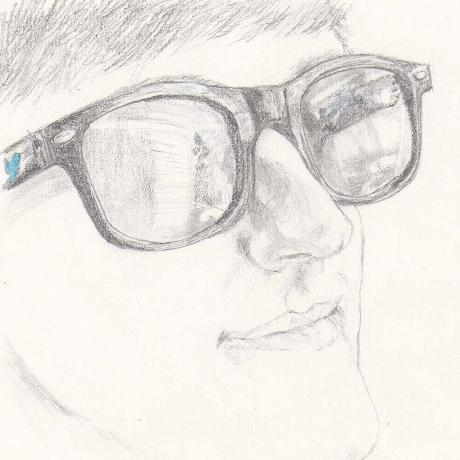We started off today with the Musée Rodin (pronounced Ro-dahn), which is dedicated to the artist Auguste Rodin. The Musée Rodin also has a Anselm Kiefer exhibit. Kiefer is a currently practicing artist, and many of the pieces are from the past few years. Many of the pieces were appropriately weird. He works a lot in mixed-media, with a combination of acrylic, wood, molten metal, and found plants (and in one piece, a pallet of dirt).
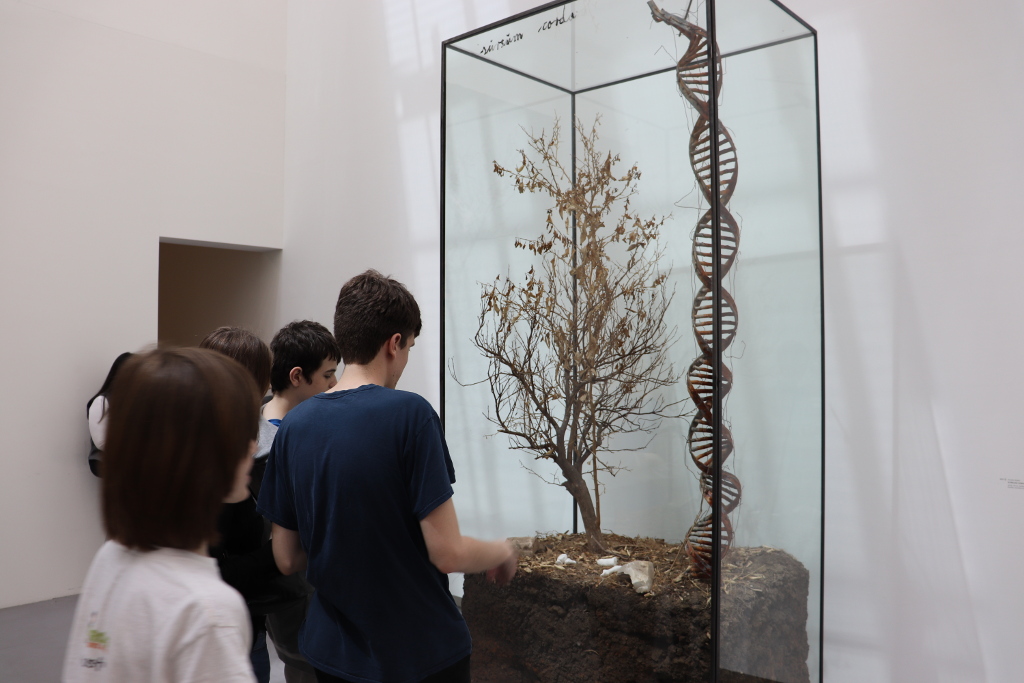
He also had a collection called “Les Cathedrals de Paris,” which referenced pagan tradition from over a thousand years ago as the Christians tried to take over the local pagan religions. A rough transcription of the explanation I heard was that, since the pagans would traditionally worship underground, the (Christian) Church would place a nude woman statue over the doorway of the church in order to make it seem more welcoming. Think about it in terms of returning to the womb.
So, logically, he drew women superimposed on cathedrals.
At least, that’s one possible intent of the author.
Regardless of whether Kiefer was just trying to woo women by drawing them in compromising positions (or maybe he was just creepy), the end result is definitely not child-friendly. Or maybe it is child-friendly, since it depicts mothers in all their glory?
Moving on.
We left the Kiefer exhibit into a beautiful garden, which contained The Thinker, the famous sculpture by Rodin of a poet (Dante) hunched over in thought.
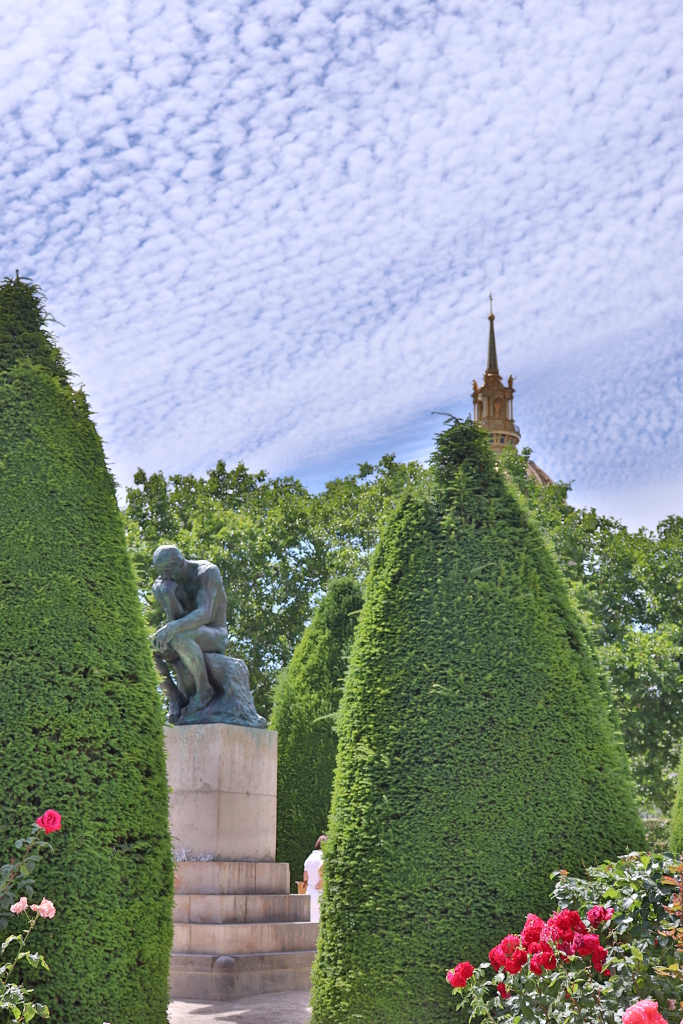
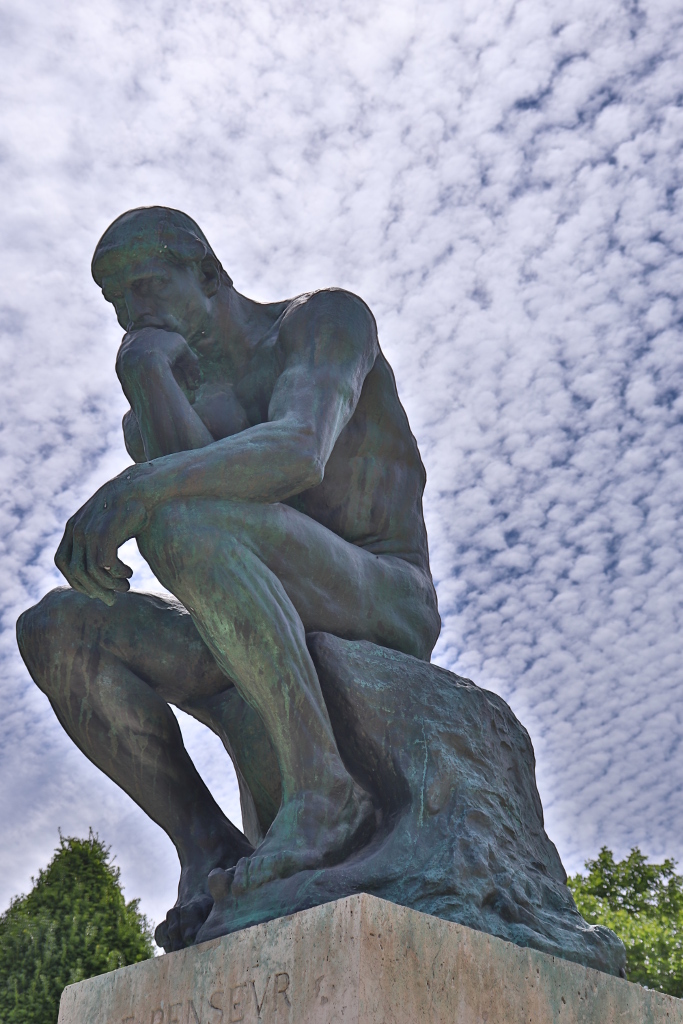
We got our picture of all of us under it, posing like the Thinker.
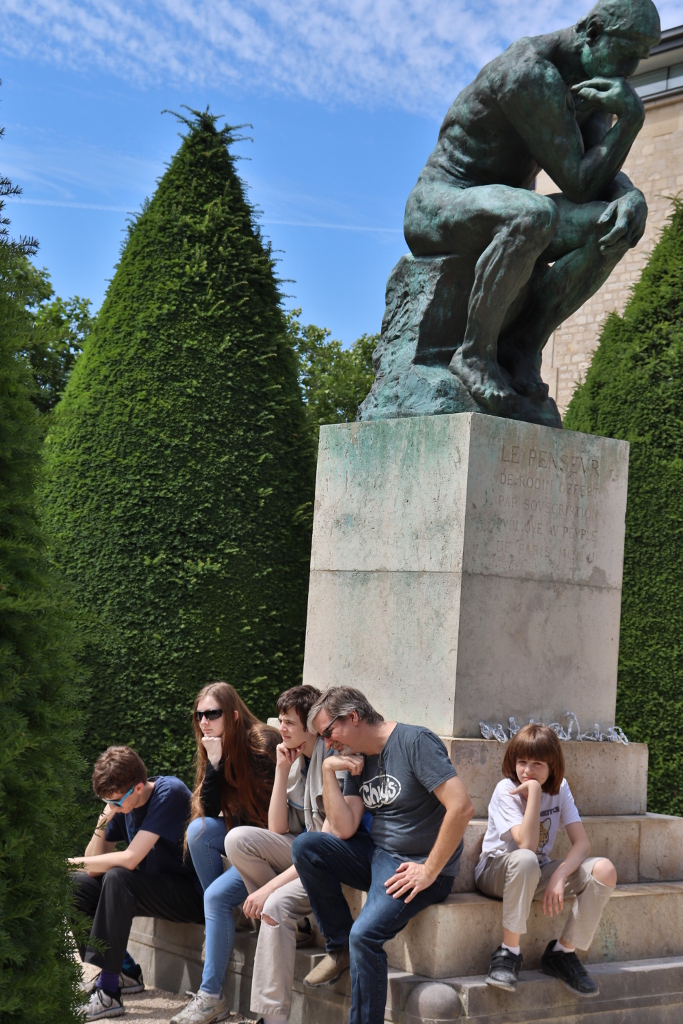
It turns out that the Thinker also appears in a larger sculpture by Rodin, the Gates of Hell (which depict the events of the Inferno). That was there as well. It was interesting to see so many bronze sculptures, after seeing so many of marble - the bronze makes the sculpture much darker, so the silhouette becomes much more important to the piece. With marble, finer details are much more visible, and shadows can be more easily seen on the surface. So e.g. it’s easier to make out facial features on marble than on bronze.
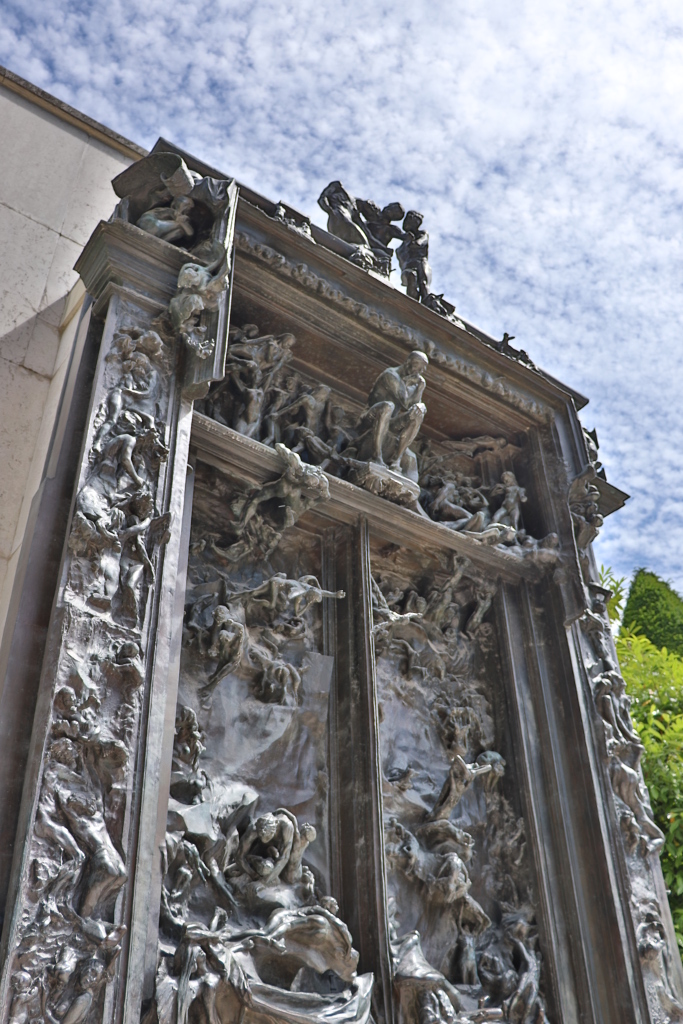
After seeing the statues in the garden, we went inside to the Rodin exhibit. It turns out Rodin also did paintings, and was good friends with Monet, so there were a few paintings by Monet on display as well. The museum also had many of the studies by Rodin (the practice pieces he did), so it was interesting to see how he would practice the different parts of a sculpture before finally putting it all together. For example, he might sculpt a few legs, and a few heads, and then a general composition of Aphrodite with a child, before making the complete detailed Aphrodite with child.
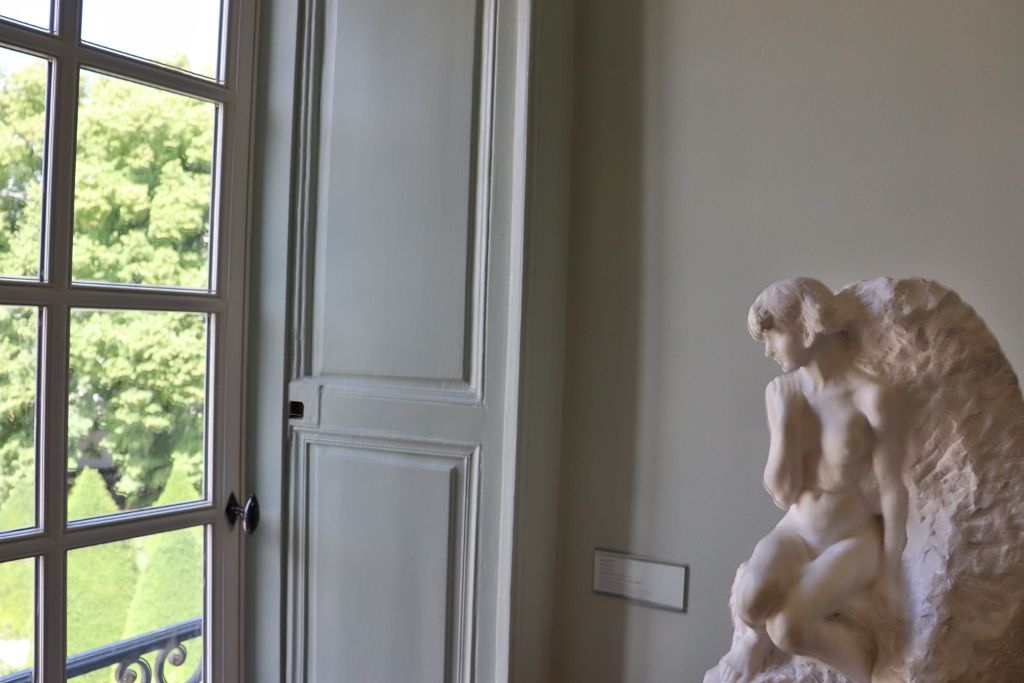
Inside there were also various versions of The Kiss, another famous sculpture by Rodin.
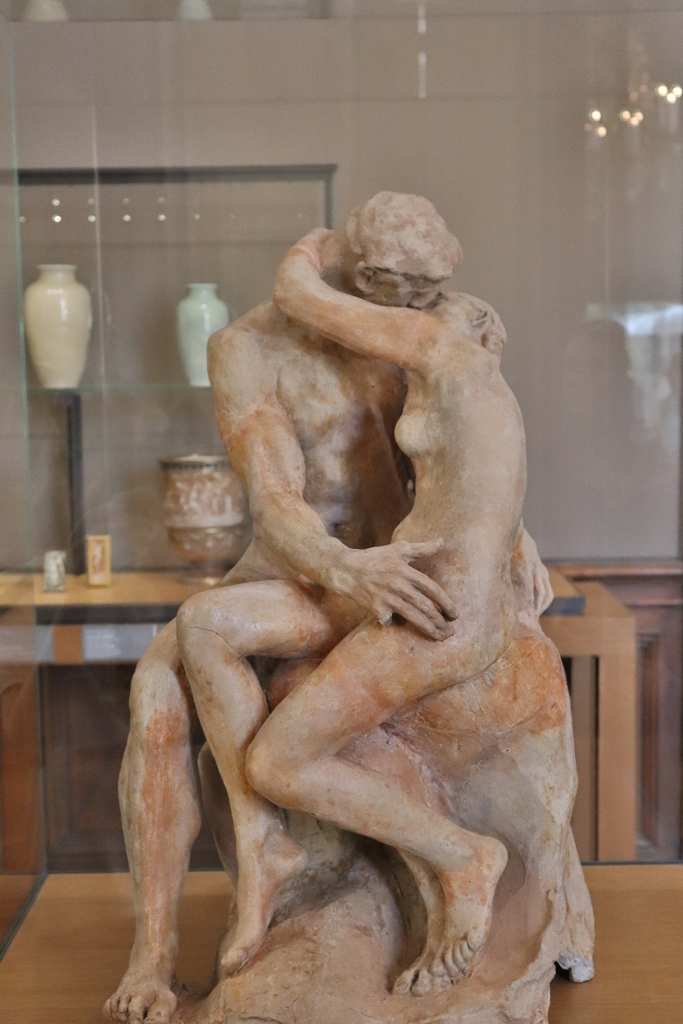
After looking at all of the Rodins, we stopped by a cafe to refresh ourselves, before heading off to the catacombs.
Unfortunately, the line for the catacombs was too long (we only left the apartment in the mid-afternoon - we’ve not been running a tight ship), so instead we stopped by an Australian bar and headed to the Pompidou.
On the way to the Pompidou, we came across what appeared to be a gas station in the middle of the road. I guess this is how people fill up their cars and motorcycles, I hadn’t noticed big corner-store stations like we have in America (or England).
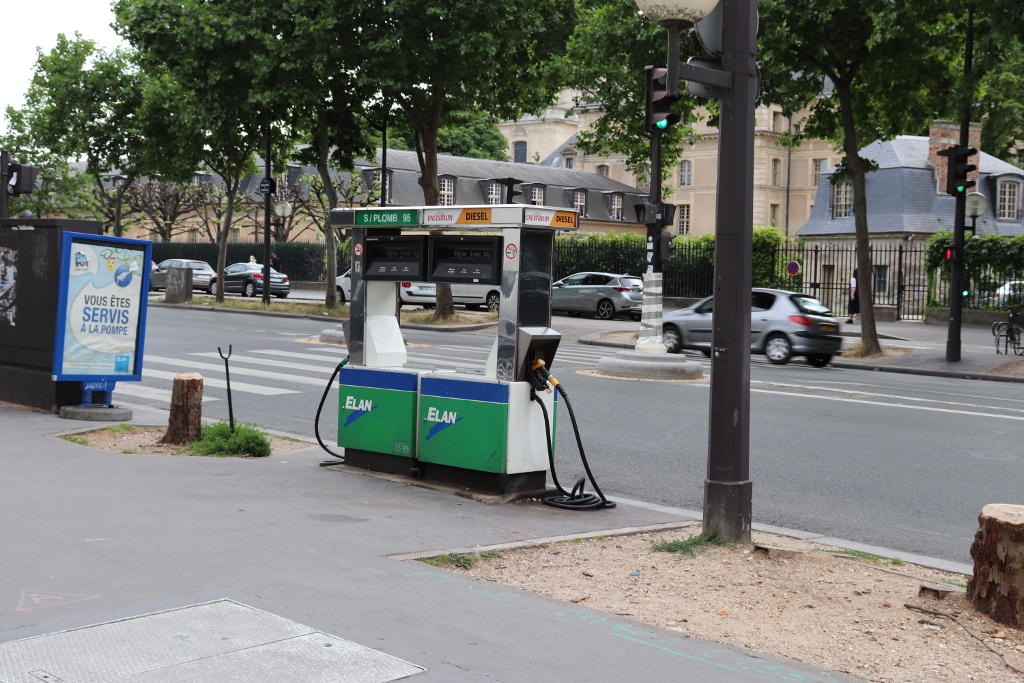
In the plaza in front of the Pompidou, we came across a pair of women, one pushing the other against the wall and yelling, with the other crying and shaking her head (and saying something in return - I don’t know French)
As we approached, I wasn’t quite sure what to do. Should I intervene? If the one punches the other, she could get quite hurt, and I don’t know the emergency number here. Or even the language. So I kept my eye on them as we walked closer.
When we got around 10 meters from them, the bigger one let go, the one up against the wall wiped her tears away and they both laughed and walked off.
Silly actors.
The Pompidou was more modern art. I appreciated these paintings a bit more than I did the Kiefers - it doesn’t feel like Picasso is trying to pull one over on me. While the pieces definitely have the abstract taste of modern art, they aren’t just quick sketches of nude women stapled to a leaf.
We got to see a good number of pieces from the modern art movement between about 1900 to 1945. The younger boys have become quite the art critics.

Though to tell the truth, they were being art critics facetiously, since neither of them understood modern art.
Some people do understand modern art, though. Dad managed to find his favorite, Mondrian.

I didn’t find any Rothkos, but I did find Picassos, which rhyme so are just as good.

A number of the paintings seemed almost like they were glowing. It turns out that the glowing paintings were shown in a darkened room, and there were projectors shining light on just the painting (and not the wall around it). This made the paints seem more vivid and neon. It also seemed almost like a cop-out. The Picasso above seems vivid without needing external light, he didn’t cheat and make a bland painting that needed a square projector to pop out.
Or maybe the artists intended for the painting to be shown under a light. That seems unlikely to me, though, since the technology in the 1920s wouldn’t have been advanced enough for such perfect matting.
The Pompidou also had a wonderful observation deck that looked out over the city. The camera we’re using to take pictures has a built-in HDR (High Dynamic Range) mode, which essentially means that it takes three different pictures (a bright one, a dark one, and a medium one) and merges them into one picture that doesn’t have any too-dark or too-bright parts.
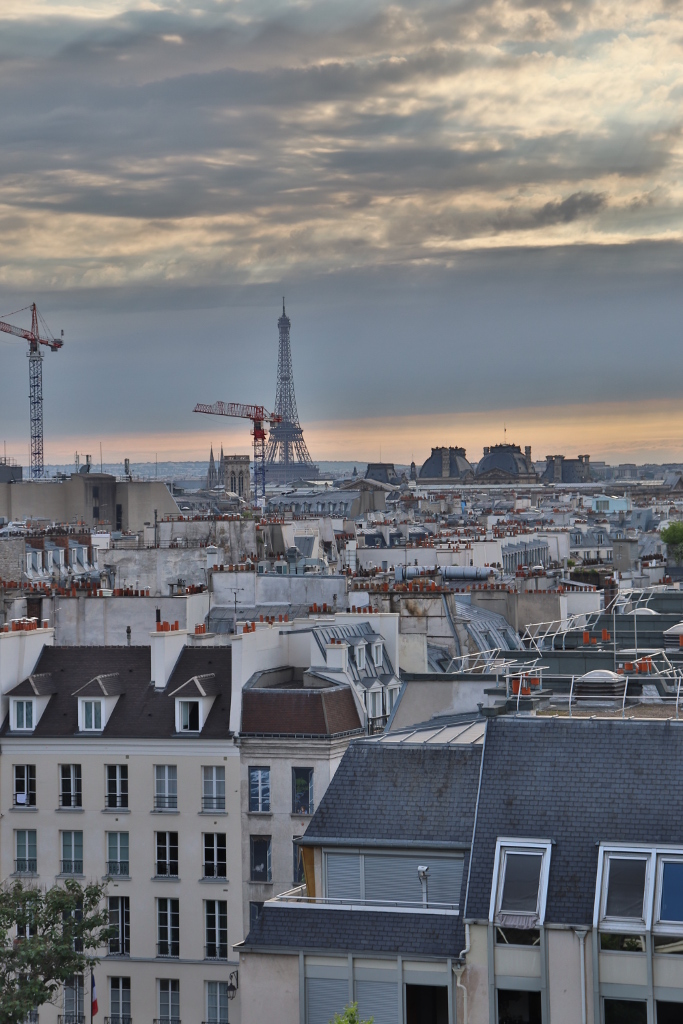
For example, if you’re taking the picture of the stained glass in a Church from the inside while the sun’s shining through it, usually either the stained glass is too bright and washed out or the church’s interior is too dark and can’t be seen in the image.
However, it has the side effect that sometimes dark objects will have a halo around them, which can be either good or bad depending on the image.
We took some pictures on the observation deck. Jason was slightly confused.
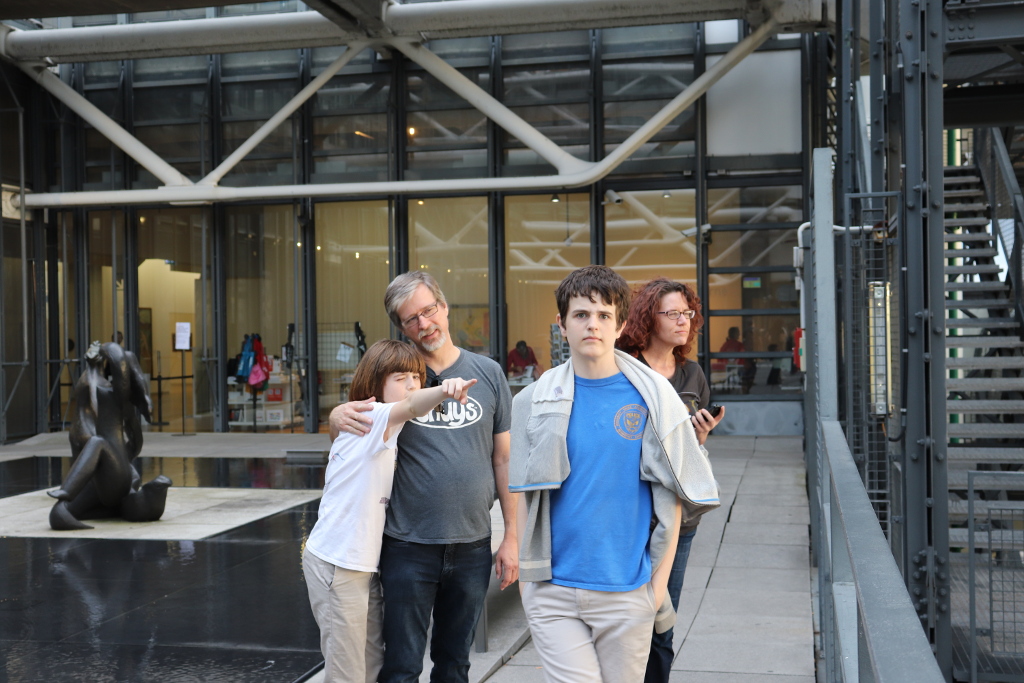
After the Pompidou closed, we took the metro to the obelisk on the way home, as it was getting dark. Along the way we found out that apparently not everyone in France is as happy about the slightly more risque ads that show up.
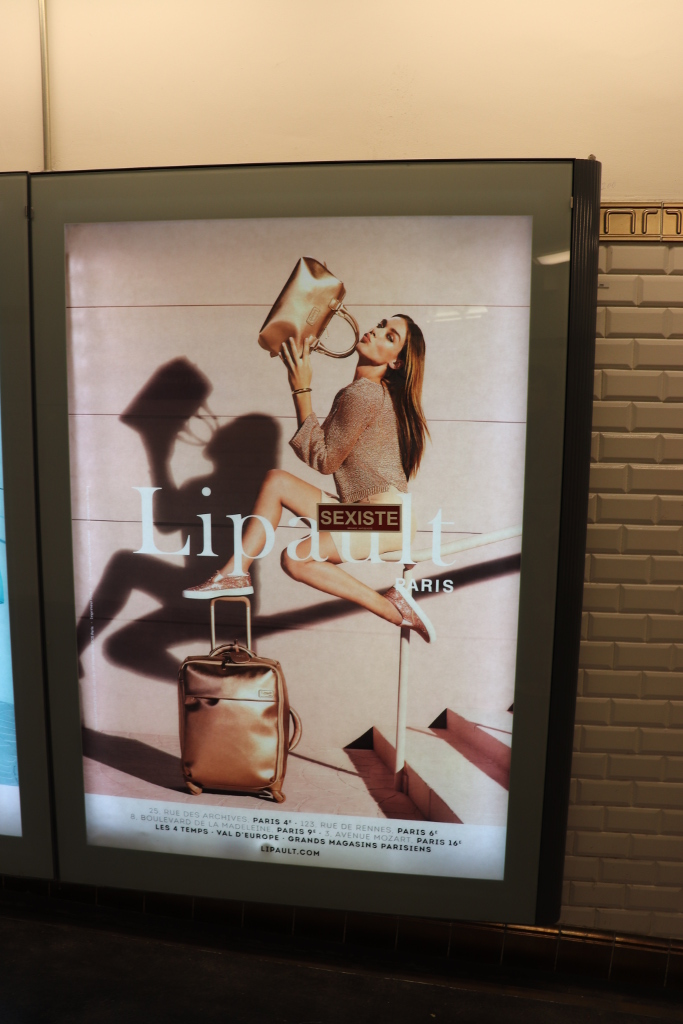
Woman Kissing Handbag, as I like to call it (it’s a common ad here), may or may not be sexist, but we definitely find it hilarious (it just seems inconvenient to travel by balancing yourself on a rolling suitcase).
The obelisk was ostensibly one of the old Egyptian obelisks that were exported as trophies. Now it stands near the Sienne, in line of sight of the Eiffel tower and the Arc de Triomph.

